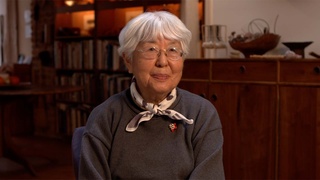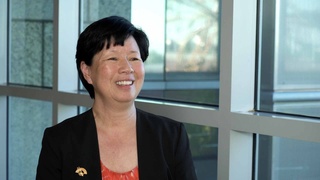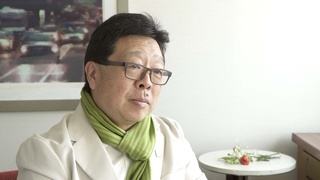Interviews
Meeting Japanese Americans from the mainland in MIS
This is the first time that I’ve met many Japanese Americans from the mainland [in Military Intelligence Service]. They had an acronym for them, but I won’t use it here. But anyway, we would call them that name of course. Anyway, many of them were very, very good and we could get along very well with them. Because having come from Kona, we felt very confident in that we were, we felt that we were just as good as anyone else wherever they came from. They’re different, but the difference is interesting because we were all the same. It was just awful. Because of that, we got along with the mainland Japanese Americans very well. Like John Aiso, who was a Commandant, the executive officer, we highly respected him because of his polish.
Date: May 29, 2006
Location: Hawai`i, US
Interviewer: Akemi Kikumura Yano
Contributed by: Watase Media Arts Center, Japanese American National Museum
Explore More Videos

Working together in Okinawa using three languages
Okinawan American whose parents are from Peru.

The lack of discussion about family’s incarceration in Amache
Sansei judge for the Superior Court of Los Angeles County in California


Expressing herself through poetry
(b. 1923) Japanese American poet, activist

Her brother’s reasons as a No-No Boy
(b. 1923) Japanese American poet, activist

Her grandfather was pressured to teach Japanese
Sansei judge on the Superior Court of Los Angeles County in California

Neighbor took care of her mother after grandfather was taken by FBI
Sansei judge on the Superior Court of Los Angeles County in California

Immediately after the bombing
(b. 1938) Japanese American. Hiroshima atomic bomb survivor

Other family members not as lucky
(b. 1938) Japanese American. Hiroshima atomic bomb survivor

His parents had little hope that he had survived the atomic bomb
(b. 1938) Japanese American. Hiroshima atomic bomb survivor

His views on nuclear weapons
(b. 1938) Japanese American. Hiroshima atomic bomb survivor

Loss When Leaving for Manzanar
Japanese American animator for Walt Disney and Hanna Barbera (1925-2007)

Forcibly deported to the U.S. from Peru
(b. 1936) Japanese Peruvian incarcerated in Crystal City

About Escobar (Spanish)
(b. 1962) Nisei Japanese Argentinian, currently residing in Japan

Stories of Grandfather at a concentration camp in Fusagasuga
(b.1974) Japanese Colombian who currently resides in the United States
